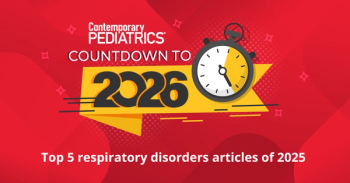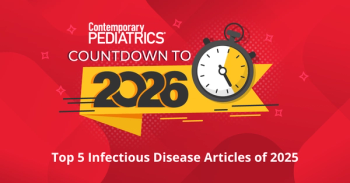
FDA issues second CRL for dasiglucagon to treat hypoglycemia in congenital hyperinsulinism
This decision marks the second time the FDA has issued a complete response letter (CRL) for dasiglucagon to treat hypoglycemia in patients 7 days and up with congenital hyperinsulinism.
The FDA has issued a second complete response letter (CRL) for dasiglucagon (Zealand Pharma), a receptor agonist that causes the liver to release stored sugar into the blood. The regulatory agency cites the decision because of the timing of a third-party manufacturing facility reinspection, which was completed in August/September 2024, requiring a new inspection classification.1
Zealand states that the "third-party manufacturer has not yet received its inspection classification following the reinspection. A prior inspection of the facility had identified deficiencies that did not involve dasiglucagon. These prior deficiencies had been resolved as of this reinspection. The CRL did not state any concerns about the clinical data package or safety of dasiglucagon."
Prior to the CRl, dasiglucagon was given Priority Review Designation by the FDA for potential approval for the prevention and treatment of hypoglycemia in pediatric patients aged 7 days and older with congenital hyperinsulinism (CHI), for up to 3 weeks of dosing. Dasiglucagon is delivered via subcutaneous continuous infusion using a wearable pump system to treat CHI, for which.1,2
CHI is a severe and rare genetic disease that primarily affects infants and children. In this patient population, pancreatic beta cells dysfunction and secrete too much insulin, leading to frequent, recurrent, and often severe episodes of hypoglycemia, Zealand Pharma noted.2
Estimates demonstrate that CHI develops in 1 out of 50,000 or more children in the United States and Europe every year. The disease results in an impacted quality of life that requires complex care including continuous intravenous infusion of glucose. These care requirements can lead to frequent hospitalization and make day-to-day social activities difficult for patients and their families.2
The NDA submission of dasiglucagon was based on the results from a pair of phase 3 trials. One trial (NCT04172441) evaluated the safety and efficacy of dasiglucagon for subcutaneous infusion among 12 neonates and infants with CHI who were aged 7 days to 12 months.2
Part 1 of the trial was a double-blind, placebo-controlled 48-hour crossover study. Results demonstrated that dasiglucagon reduced the need for intravenous infusion of glucose by 55% compared to placebo. In part 2—a 21-day open-label treatment— 10 of 12 neonates and infants were weaned off intravenous glucose for at least 12 hours. Seven of the 12 neonates and infants remained weaned off intravenous glucose at the end of the trial without concomitant pancreatic surgery, according to Zealand Pharma.2
A second trial (NCT03777176) among 32 children aged 3 months to 12 years in a homecare setting revealed dasiglucagon treatment did not significantly reduce the number of intermittent self-measured plasma glucose-measured hypoglycemia events per week compared to standard of care alone.2
Dasiglucagon treatment in addition to standard-of-care therapies reduced time in hypoglycemia (glucose <70 mg / dL) by approximately 50%, and reduced continuous glucose monitor-detected hypoglycemia (<3.9 mmol/L) during weeks 2 to 4 by 43% compared to standard of care treatment alone (post hoc analysis; event rate ratio: 0.57 [0.39; 0.83], P = .0029).2,3
“We at Zealand Pharma are acutely aware of the significant unmet medical need for newborns and children with congenital hyperinsulinism who have either no or very limited treatment options today,” said David Kendall, MD., chief medical officer of Zealand Pharma. “We are committed to working with the FDA and our third-party manufacturing partner to bring dasiglucagon to patients living with this devastating disease in the months ahead.”1
References:
1. Zealand Pharma. Zealand Pharma provides U.S. regulatory update on dasiglucagon in congenital hyperinsulinism. GlobeNewswire News Room. October 8, 2024. Accessed October 8, 2024. https://www.globenewswire.com/en/news-release/2024/10/08/2960183/0/en/Zealand-Pharma-provides-U-S-regulatory-update-on-dasiglucagon-in-congenital-hyperinsulinism.html.
2. Zealand Pharma announces designation of priority review by the US FDA for dasiglucagon in congenital hyperinsulinism. Zeland Pharma. August 30, 2023. Accessed October 8, 2024. https://www.globenewswire.com/news-release/2023/08/30/2734023/0/en/Zealand-Pharma-announces-designation-of-priority-review-by-the-US-FDA-for-dasiglucagon-in-congenital-hyperinsulinism.html#xd_co_f=NjU3ZThiMGMtZjcxNy00OGY3LTk0NjItOWMyZThhNWU1N2I1~
3. Thornton PS, De Leon DD, Empting S, Zangen D, et al. Dasiglucagon for the Treatment of Congenital Hyperinsulinism: A Randomized Phase 3 Trial in Infants and Children. J Clin Endocrinol Metab. 2024 Mar 15;109(4):1071-1079. doi: 10.1210/clinem/dgad648. PMID: 37930757; PMCID: PMC10940263.
Newsletter
Access practical, evidence-based guidance to support better care for our youngest patients. Join our email list for the latest clinical updates.




